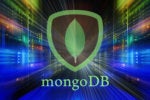
Send a message with Azure Notification Hubs
Azure Notification Hubs can deliver notifications to any device from any platform anywhere, without your having to manage all aspects of the messaging stack.

How Microsoft uses walkthroughs to guide open source development
Often the hardest part of contributing to an open source project is learning where to start. Microsoft has a cure for that.

Building collaborative apps with Microsoft Loop components
Adaptive Card-based Loop components are live and portable chunks of functionality that you can embed in Outlook, Teams, business apps, and your own code. Here’s how to get started.

Launch into satellite applications with Microsoft Azure
Microsoft’s Azure Space platform and Azure Orbital Space SDK are taking edge computing to the final frontier, starting with satellite image processing, geospatial, and communications applications.

The key new features and changes in .NET 8
With Microsoft’s yearly .NET release just around the corner, it’s time to start thinking about the changes you will need to make to your code.

Building LLM applications with vector search in Azure Cognitive Services
Microsoft’s Cognitive Search API now offers vector search as a service, ready for use with large language models in Azure OpenAI and beyond.

Understanding OneLake and lakehouses in Microsoft Fabric
Microsoft Azure’s new, unified data platform aims to be your one-stop shop for analytics and machine learning at scale.

Tame your wild LLM with TypeChat
Large language models mean not having to use complicated regular expression handlers to turn text into data. Using TypeChat, you can ensure that that data is type-safe JSON.

The power of process mining in Power Automate
Process mining is now part of Microsoft’s process automation suite, giving you the KPIs and visualizations you need to identify bottlenecks in both manual workflows and software processes.

Customizing Microsoft Dev Boxes with code
Configuration as code is coming to Microsoft’s Azure-hosted workstations, allowing us to use WinGet, YAML files, and PowerShell DSC to deliver ready-to-run toolchains to developers.

Build custom actions for Power Automate for Windows
Bundled with Windows 11, Power Automate for Windows lets you wrap low-code workflows around your desktop applications. A new SDK supports custom actions.

Build accelerated AI apps for NPUs with Olive
Microsoft’s open-source, hardware-aware optimization tool for ONNX models is an essential part of its AI application development tool chain.

Getting started with MQTT in Azure Event Grid
The addition of MQTT protocol support paves the way to bringing SCADA control systems and other industrial IoT deployments to Azure. Here’s how to get started.

Azure Cosmos DB joins the AI toolchain
Microsoft has introduced a spectrum of new tools to make it easier to customize and focus the output of GPT-based AI models. Cosmos DB plays an important role.

KAN: A Kubernetes edge environment for computer vision
Microsoft’s open-source KubeAI Application Nucleus is a low-touch, Kubernetes-based system for building and running machine learning applications for edge devices.

Kubernetes cost management for the real world
How much will Kubernetes cost to run? That question has become much easier to answer for Azure Kubernetes Service, thanks to OpenCost integration.

Semantic Kernel: A bridge between large language models and your code
Microsoft’s Semantic Kernel SDK makes it easier to manage complex prompts and get focused results from large language models like GPT.

Working with Azure’s Data API builder
Add REST and GraphQL APIs to any database with a handy .NET CLI tool.

Using Hugging Face machine learning models in Azure
Microsoft is working to bring open source machine learning models into Azure applications and services.

Design effective AI prompts with Microsoft Prompt Engine
Microsoft’s open source tool helps you write code to work with generative AI, ensuring results give correct information and stay on topic.






